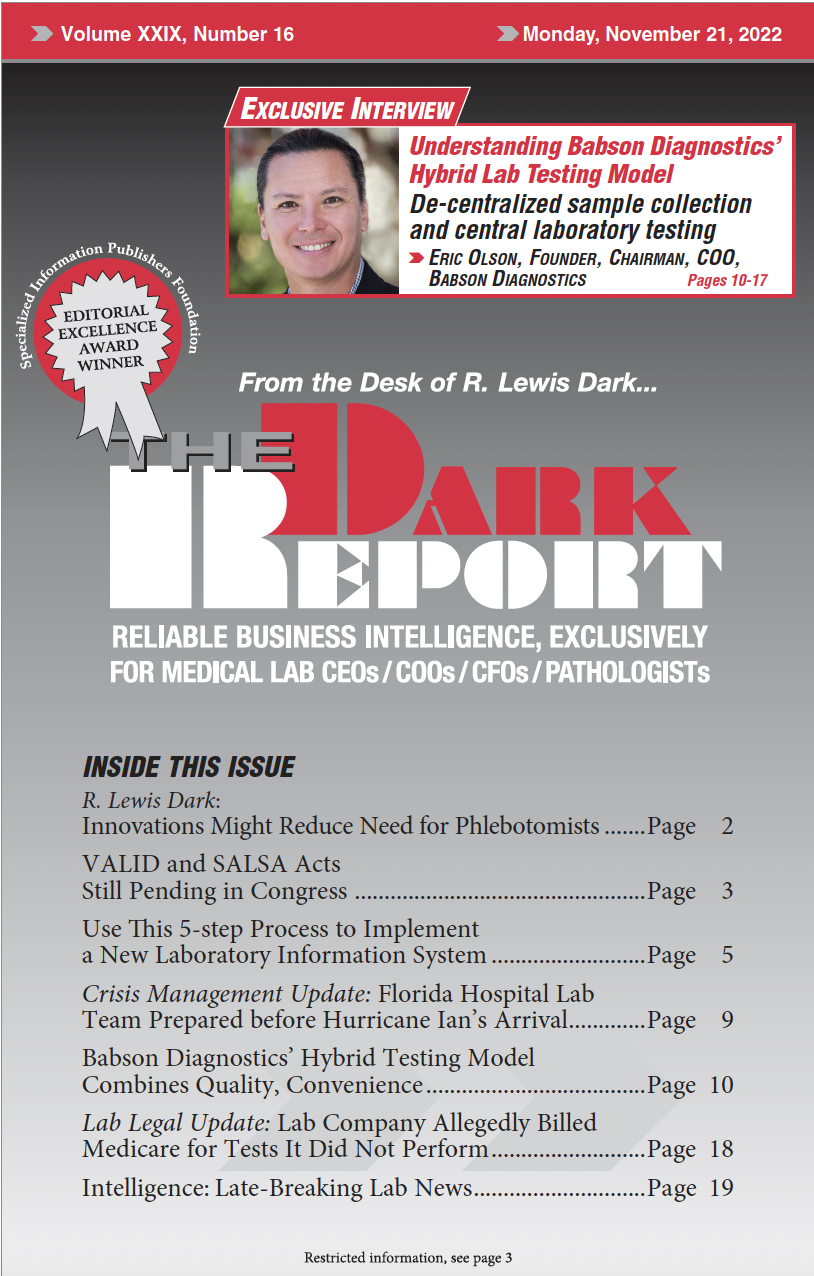CEO SUMMARY: Responding to its own data about consumer preferences, healthcare technology company Babson Diagnostics is pursuing a new hybrid model for blood draws that it believes brings together the best of clinical laboratories and retail pharmacies. Laboratory managers and pathologists may find opportunities in such an approach. TWO EMERGING TRENDS HAVE THE POTENTIAL to …
Babson Diagnostics’ Hybrid Model Combines Quality, Convenience Read More »
To access this post, you must purchase The Dark Report.


